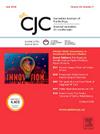预测房颤消融结果的自动导出单极低压面积负荷。
IF 5.3
2区 医学
Q1 CARDIAC & CARDIOVASCULAR SYSTEMS
引用次数: 0
摘要
背景:单极电压测图已经证明了在描绘全面心房基底方面的价值。然而,单极低压区(Uni-LVA)在房颤(AF)消融中的临床应用是有限的,主要是由于缺乏一个完善的电压阈值。本研究旨在:(1)确定左心房Uni-LVA的阈值;(2)在前瞻性房颤队列中研究Uni-LVA负担与消融结果之间的关系。方法:Uni-LVA阈值被定义为6个截止值的平均值,代表了接受左侧辅助通路消融和伴随LA定位的参考队列中95%的心电图电压。在单中心前瞻性房颤消融队列中,进行LA制图,并自动计算Uni-LVA负担。结果:单极电压阈值(HR=5.08, p)明显高于单极电压阈值(HR=5.08, p)本文章由计算机程序翻译,如有差异,请以英文原文为准。
Automatically Derived Unipolar Low-Voltage-Area Burden for Predicting Atrial Fibrillation Ablation Outcomes
Background
Unipolar voltage mapping has shown value in delineating comprehensive atrial substrates. However, the clinical application of unipolar low-voltage areas (Uni-LVAs) in atrial fibrillation (AF) ablation is limited, largely because of the absence of a well established voltage threshold. In this study we aimed to: (1) define the threshold for Uni-LVA in the left atrium (LA); and (2) investigate the association between Uni-LVA burden and ablation outcomes in a prospective AF cohort.
Methods
The Uni-LVA threshold was defined as the average of the 6 cutoff values, representing the voltage at 95% of all electrograms from a reference cohort who underwent left-sided accessory pathway ablation and concomitant LA mapping. In a single-centre, prospective AF ablation cohort, LA mapping was conducted and the Uni-LVA burden was automatically calculated.
Results
Uni-LVA was defined as an area with an amplitude of < 1.6 mV. In 145 patients, the Uni-LVA burden was automatically obtained using customized software. During a follow-up period of 16 ± 4 months, 44 patients experienced recurrence. Uni-LVA burden was significantly associated with recurrence rates. Compared with group 1 (< 1%), the recurrence rates for group 2 (1%-10%) and group 3 (> 10%) were significantly higher (hazard ratio, 5.08 [P<0.001] and hazard ratio, 24.07 [P < 0.001]). Receiver operator curve analysis showed significantly higher predictive efficiency for Uni-LVA burden (area under the curve, 0.880 vs 0.762; P < 0.001) compared with the bipolar low voltage burden.
Conclusions
Using a unipolar voltage threshold of < 1.6 mV, Uni-LVA burden was independently associated with long-term AF recurrence after ablation and outperformed bipolar assessment. This finding suggests Uni-LVA could serve as a valuable tool for prognostic evaluation.
求助全文
通过发布文献求助,成功后即可免费获取论文全文。
去求助
来源期刊

Canadian Journal of Cardiology
医学-心血管系统
CiteScore
9.20
自引率
8.10%
发文量
546
审稿时长
32 days
期刊介绍:
The Canadian Journal of Cardiology (CJC) is the official journal of the Canadian Cardiovascular Society (CCS). The CJC is a vehicle for the international dissemination of new knowledge in cardiology and cardiovascular science, particularly serving as the major venue for Canadian cardiovascular medicine.
 求助内容:
求助内容: 应助结果提醒方式:
应助结果提醒方式:


